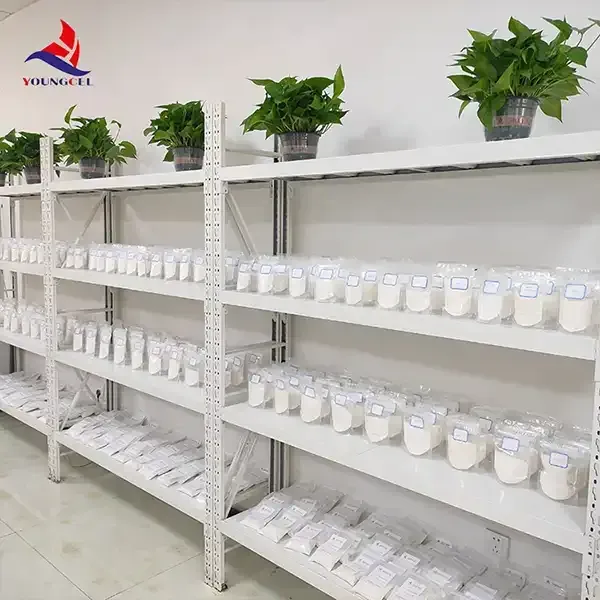The Role of Cellulose Coating in Modern Applications
Cellulose, a natural polymer derived from plant cell walls, has gained significant attention in various industries due to its eco-friendly properties and versatility. Cellulose-based coatings are increasingly being used across a range of applications, from food packaging to pharmaceuticals, and even in cosmetics. This article explores the characteristics, benefits, and diverse applications of cellulose coatings, highlighting their importance in today’s market.
Characteristics of Cellulose Coatings
Cellulose coatings are primarily made from cellulose derivatives, such as cellulose acetate, cellulose nitrate, and carboxymethyl cellulose. These materials are biodegradable, non-toxic, and renewable, making them an attractive alternative to synthetic coatings that may have harmful environmental impacts. One of the most significant characteristics of cellulose coatings is their excellent barrier properties. They provide resistance to moisture, gases, and oils, which is essential for preserving the integrity of products, especially in food packaging.
Moreover, cellulose coatings exhibit good mechanical strength, flexibility, and adhesion properties. They can be applied to various substrates, including paper, plastic, and metal, enhancing the overall performance and lifespan of the products they cover. Furthermore, cellulose coatings can be easily modified to achieve desired properties, such as increased water repellency or improved thermal stability, making them highly adaptable for various applications.
Environmental Benefits
One of the leading advantages of using cellulose coatings is their environmental sustainability. As the world grapples with plastic pollution and the depletion of non-renewable resources, industries are shifting towards greener alternatives. Cellulose coatings are biodegradable, breaking down naturally over time without leaving harmful residues. This characteristic is particularly beneficial in packaging applications, where consumer demand for sustainable options continues to grow.
By opting for cellulose coatings, manufacturers can also reduce their carbon footprint. The cultivation of cellulose-producing plants like wood and cotton contributes to carbon sequestration, thus playing a role in mitigating climate change. Furthermore, cellulose coatings can often be produced using less energy compared to traditional synthetic coatings, adding to their eco-friendly appeal.
cellulose coating

Applications in Food Packaging
One of the most promising applications of cellulose coatings is in food packaging. With increasing consumer awareness about food safety and sustainability, cellulose coatings provide an attractive, green solution. They can act as a barrier against oxygen, moisture, and light, which helps extend the shelf life of food products. Additionally, cellulose coatings are often derived from renewable sources and can be designed to be compostable, aligning with the growing trend towards zero-waste packaging.
Recent developments in cellulose coatings have led to innovations such as active packaging, where the coatings can contain natural antimicrobial agents. These agents can help inhibit the growth of bacteria and fungi, providing further protection for food products and ensuring consumer safety.
Pharmaceutical and Cosmetic Uses
In the pharmaceutical industry, cellulose coatings are used to create controlled-release formulations. By coating tablets with cellulose derivatives, manufacturers can regulate the release rate of active ingredients, improving drug efficacy and patient compliance. The biocompatibility of cellulose compounds also makes them suitable for use in medical applications, including drug delivery systems and wound dressings.
Cosmetics is another sector that has embraced cellulose coatings. In cosmetic formulations, cellulose can enhance texture and improve stability. Furthermore, cellulose films are often used in peel-off masks, providing a satisfying user experience while ensuring a natural and safe product.
Conclusion
Cellulose coatings represent a significant advancement in the quest for sustainable, high-performance materials across various industries. Their eco-friendly properties, coupled with excellent barrier functions, mechanical strength, and adaptability, make them an ideal choice for a wide array of applications, from food packaging to pharmaceuticals and cosmetics. As the demand for sustainable solutions continues to rise, cellulose coatings are poised to play a critical role in shaping a greener future. With ongoing research and development, the potential of cellulose coatings will only expand, offering even more innovative solutions to meet the needs of consumers and manufacturers alike.
-
A Comprehensive Guide to Methyl Ethyl Hydroxyethyl Cellulose: Applications and Industry InsightsNewsNov.24,2025
-
Understanding Methyl 2 Hydroxyethyl Cellulose: Uses, Benefits & Industry InsightsNewsNov.24,2025
-
Hydroxyethyl Methyl Cellulose HEMC: Industrial Uses, Benefits & Future TrendsNewsNov.23,2025
-
HEMC Cellulose: Versatile & Sustainable Industrial Polymer | YoungcelNewsNov.23,2025
-
Methyl Hydroxyethyl Cellulose: Versatile Building Block for Industry & SustainabilityNewsNov.23,2025
-
CAS 9032 42 2: Understanding Polyvinyl Alcohol's Impact on Industry & SustainabilityNewsNov.22,2025




